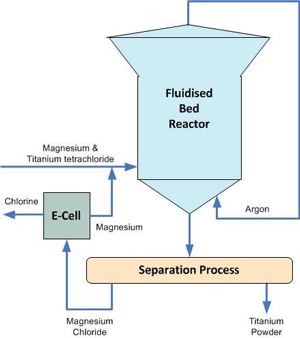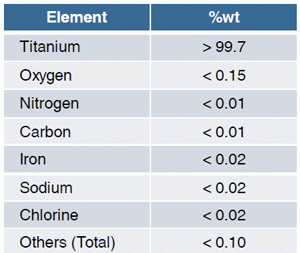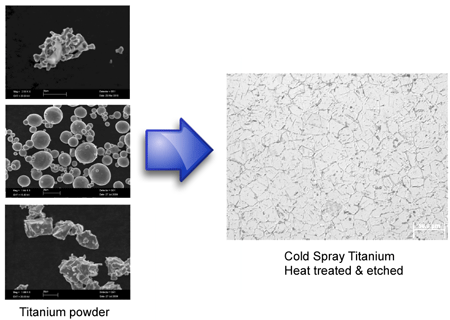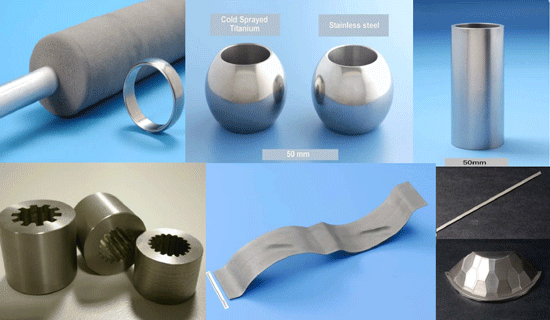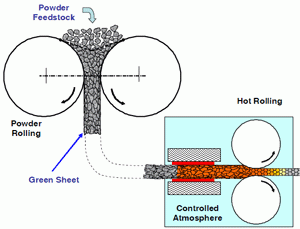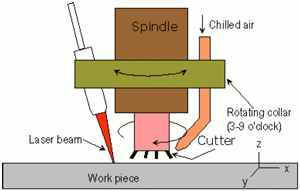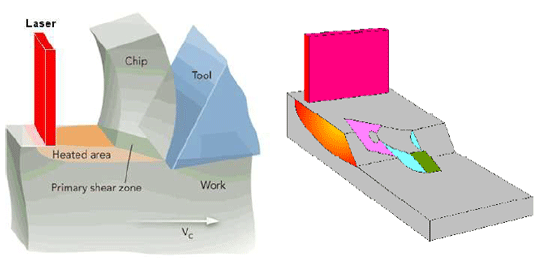Australian titanium: A new continuous process for the direct production of CP Ti powder developed at CSIRO
One of the opening overview presentations from John Barnes, Theme Leader, Titanium Technologies, CSIRO, Australia entitled “Australian Titanium – From Ore to More”, outlined the development activities of CSIRO in the titanium PM field.
CSIRO is Australia’s national science agency and is one of the largest and most diverse in the world. It has 6,500 staff in 55 locations and is ranked in the top 1% in 14 research fields. It has created 20 spin-off companies in the past 6 years and has 160 active licensees for its innovations.
Australia has considerable resources in titanium ores and the aim of CSIRO’s activities has been to create means of adding value in downstream processing of these ores.
This aim has generated innovative technology in titanium powder production, in a range of powder consolidation methods and in specialised heat treatment processes.
The flagship CSIRO development in titanium powder production has been that of a new continuous process for the direct production of CP Ti powder. The TiRO™ process (Fig.1) has two major steps. The first step involves the reaction of titanium tetrachloride and magnesium powder in a fluidised bed to form tiny (1.5 µm) titanium metal particles, uniformly dispersed inside larger spheroidal magnesium chloride particles with an average size of 350 µm.
The second step involves a continuous vacuum distillation in which the magnesium chloride is removed by volatolisation and the titanium particles come together to form partially sintered, predominantly shell like structures. The vacuum distilled product is then lightly ground and screened to produce Ti powder with a large portion in the -125 µm size range. The process offers advantages over the Kroll process in terms of energy consumption, capital investment requirements and low labour requirements and high throughputs (as a continuous process).
An example of the demonstrated compositional quality of TiRO™ is shown in Fig. 2.
Several process routes for direct conversion of titanium powders to finished semi-products are being developed at CSIRO. These include the use of the cold spray process (Figs. 3 and 4), continuous extrusion (production of 12, 9 and 6 mm extruded products, using CP titanium and blended element materials, has been demonstrated for applications such as welding wire and fasteners) and continuous sheet rolling (Fig.5).
The influence of heat treatment parameters on the microstructure and properties of titanium strip produced by direct powder rolling/hot rolling consolidation has also been studied.
Additive manufacturing of near net shape titanium products is also being researched.
In the wrought titanium product field, thermally assisted machining is also being developed as an enabling technology (Figs. 6 and 7). Localised surface heating lowers the yield stress and work hardening rate in the shear zone of the plate thus allowing cutting at high speed without tool damage.
Further reading:
Titanium and titanium alloy Powder Injection Moulding: Matching application requirements
Mixing titanium MIM feedstock: Homogeneity, debinding and handling strength
Production of fine titanium powders via the Hydride-Dehydride (HDH) process
Titanium parts by powder injection moulding of TiH2-based feedstocks
Advanced metal powder injection moulding for multilayered micro porous titanium components
News | Articles | Market reviews | Search directory | Subscribe to e-newsletter



